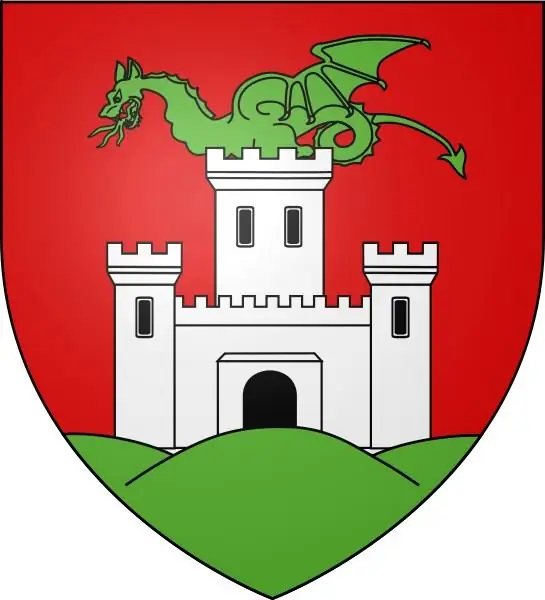
The popular tourist city of Ljubljana, located on the banks of the Ljubljanica River, is a real visiting card of Slovenia. It is located at the foothills of the Julian Alps in the so-called Ljubljana Basin.
This city is not very popular among domestic tourists (mostly because they simply do not know about its existence). Some still heard about it, but considered it a suburb, unworthy of attention. However, this is not at all true.
It is not for nothing that Ljubljana was nicknamed "Little Prague", because its beauty is breathtaking, and you can't even imagine a more suitable place to take some unforgettable memory photos. And what is also great about this city is that it is not shy about its history, which at times was very turbulent. And this is forever captured by the coat of arms of Ljubljana, which, moreover, is distinguished by a rather original design.
History of the coat of arms of Ljubljana
It is curious that the official coat of arms of the modern city is almost identical to the one that was adopted at the beginning of the XIV century. At least, it is known for certain that such basic attributes as a mountain, a castle with a tower and the figure of the Serpent were definitely present on it. Although, if we are very strict to find fault with the numbers, then this coat of arms was officially adopted only after Slovenia gained full independence.
Description of the composition
In total, the coat of arms contains the following details: a scarlet shield; mountain; castle with a tower; the figure of the Serpent. If taken in order, the basis of the coat of arms is a shield with a red background, symbolizing the courage and military prowess of the townspeople who are able to shed blood for their native land.
A mountain, if it is depicted with greenery (just like in this case), in the opinion of heraldists, means great accomplishments, supported only by their own strength. The castle with a tower in this case does not have any special connotation, and here the whole point is that in the Middle Ages this part of the composition only depicted the status of the city. However, in a broader interpretation, a castle means a stronghold, protection and a dominant position of a city in a given area.
The figure of the Serpent is the most interesting detail of the whole composition. In Slavic heraldry, this character plays a rather negative role, but in this case he looks like a defender of the city or, at least, an ordinary neutral character - a tribute to local mythology.






